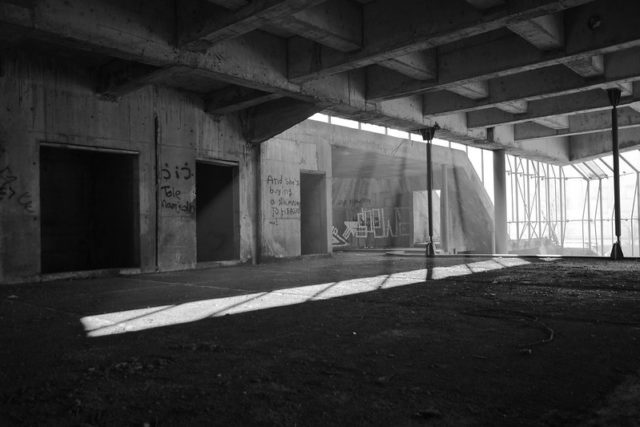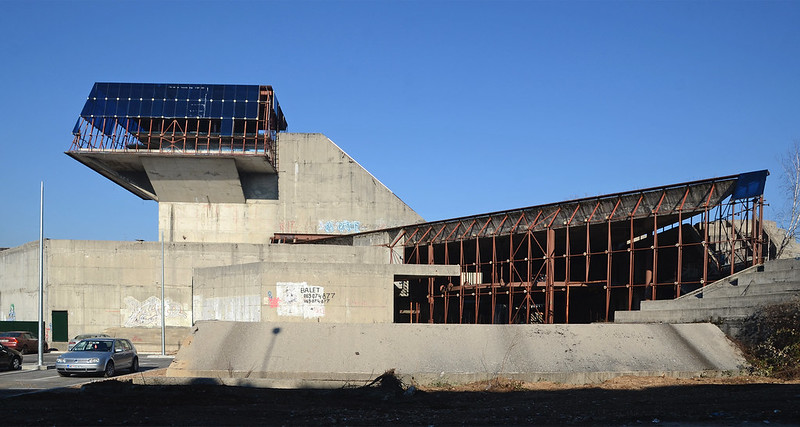While Montenegro is renowned for the beauty of its pristine mountains and the deep Adriatic Sea, the second largest city of Nikšić has become famous for a particular abandoned building which will hopefully soon be getting a new lease of life.
The House of Revolution (known by the locals as Dom Revolucije) stands in the center of the city and was once destined to be a cultural center. It also had a dual purpose as a war memorial, to preserve the memory of the partisans who fought during the Second World War, as well as the socialist victory over fascism and Nazism.
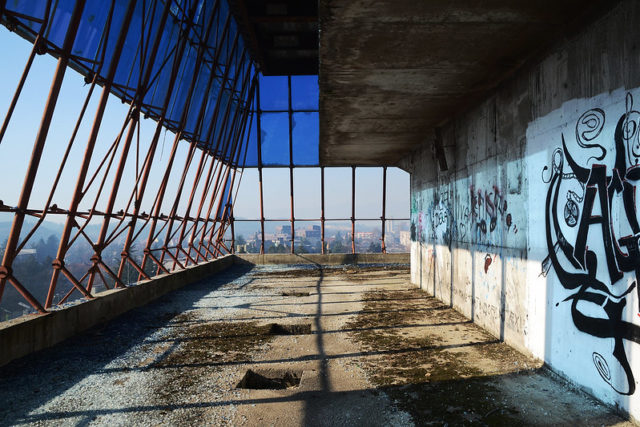
In the 1970s, the Slovenian architect Marko Mušič designed a huge complex that would stir national pride among the citizens of Yugoslavia. Marko Mušič is a renowned architect who designed buildings in Zagreb, Skopje, and Ljubljana.
Construction began in the fall of 1978. Initially, the area of the complex was to be 7,000 square meters (8,372 square yards), but as time went on, it was gradually increased to 22,000 square meters (26,312 square yards).
Only 250 square meters was to constitute the memorial site. The plan for the rest of the House of Revolution incorporated educational institutions, shops, a theater with 1200 seats, a youth center, a restaurant, a gallery, radio and television studios, conference rooms, and an amphitheater that could be used in the summer.
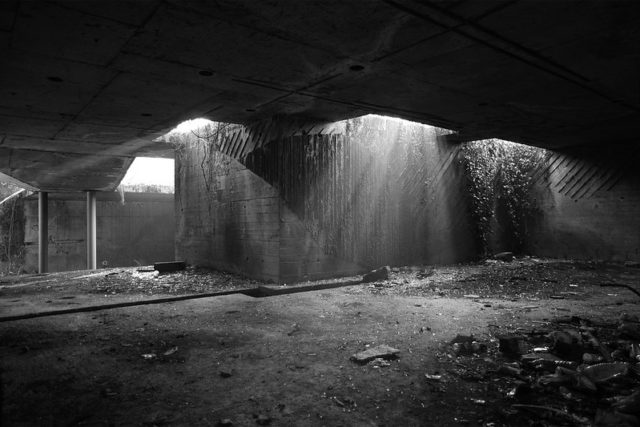
The modernist style of architecture was popular during this period, and the House of Revolution combined the socialist realism of the East with the international style of the West. There were plans to host large and small events, grand performances, and various daily activities that visitors and the people of Nikšić could enjoy.
Construction labored on for about ten years, and the city reportedly invested about 25 million euros in the project. However, the project was never completed.
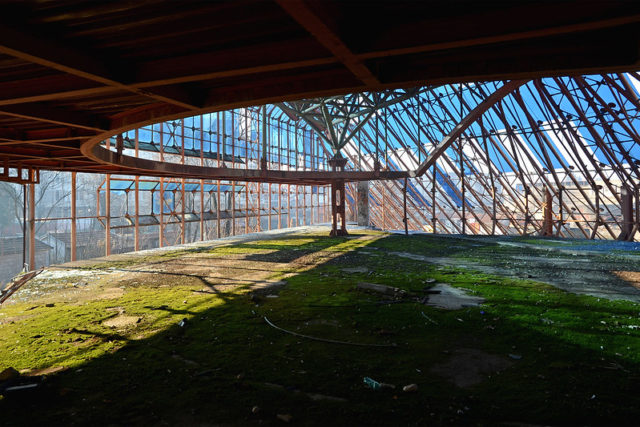
Officially, construction halted in 1989 due to the growing conflicts that led to the collapse of Yugoslavia. Due to the economic and political crises that followed, construction was never resumed.
It is a sad fact that many federal projects ceased around this time, and the House of Revolution was no exception. The supporting structure used over 400 tons of steel, which could have been used for 3,000 flats or 50 high-rise buildings.
When it was abandoned, the House of Revolution had only bare concrete walls, steel beams, and its iconic blue windows in place. The site was left without security, so much the blue glass and other valuables have long since been taken by scavengers.
Over time, the exposed structure naturally began to decline. The basements and underground passages were flooded by both rainwater and sewage. At times, the water reached a height of up to 10 meters (39 feet).
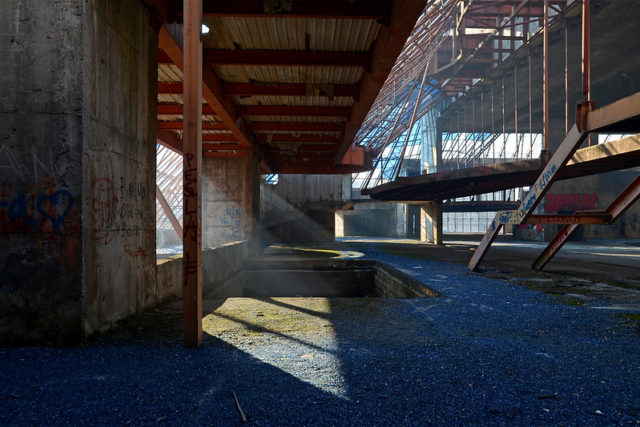
However, in its abandoned state, the House of Revolution attracted urban explorers and a wealth of street artists. It was easy enough to get in, but given the building’s terrible state, explorers needed to beware rotten floorboards that could plunge the unwary into the basement rooms. Nevertheless, many explorers thought the hazards were worth it due to the stunning architecture and the fantastic views.
Sadly, the place was also plagued by local gangs, addicts, stray animals, and the site of several fatalities. It was said that this place came to symbolize a destroyed Yugoslavia. But while some considered it a symbol of the past, many thought it an eyesore.
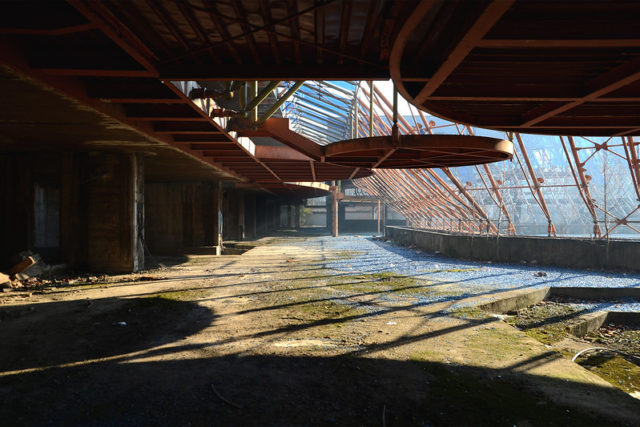
In 2011, the mayor of Nikšić announced that the unfinished complex would be turned into a Center for Contemporary Art in Montenegro. The new project would see the building house a gallery, offices, workshops, cafes, event spaces, an underground car park, and a play area for children.
Unfortunately, the project would cost 50 million euros, a sum that could not be raised without international support.
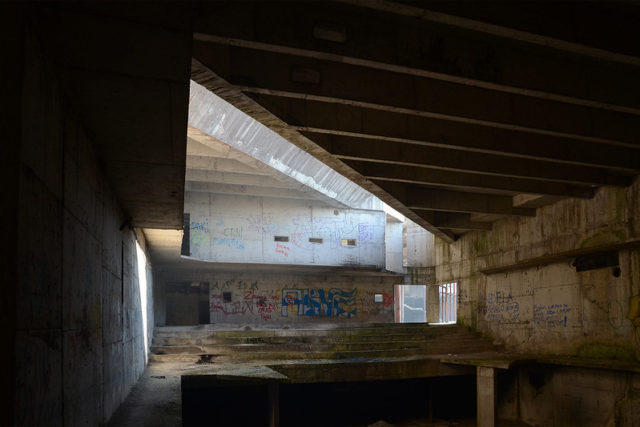
In 2016, the future seemed brighter for the House of Revolution when a firm of architects won a competition to adapt and reconstruct the derelict building into a useable structure for the city’s residents.
The key to this plan was to treat the property not as a building but as an “urbanscape.” Only 10% of the land would be used for covered buildings, such as a cafe, offices, a gallery, and space for educational workshops. Beyond that, 20% would be used as walkways and promenades, while 70% would be left open but safe and secure.
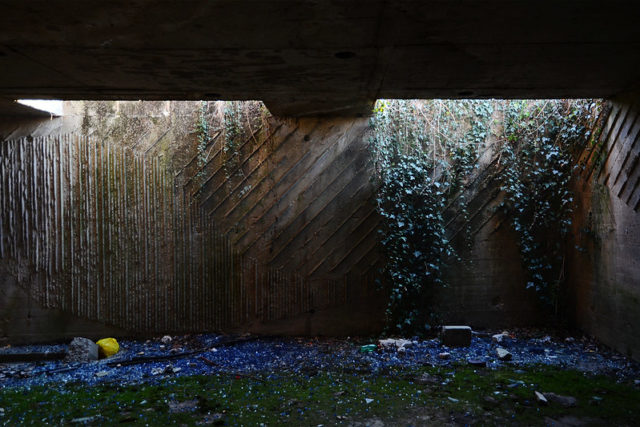
Sadly, reports from 2018 suggest that there were conflicts and obstacles to the planned regeneration. The most recent local reports from 2020 indicate that a new project has been announced that would see the House of Revolution become the site of a biochemical laboratory as well as TV and radio studios.
The photographs were taken by Francesco Melchionda, who managed to visit this impressive building before its partial demolition.
Francesco has an outstanding Flickr page where you can find a big collection of his own images which he happily shares with his followers. Make sure to visit his account to check more of his beautiful work.
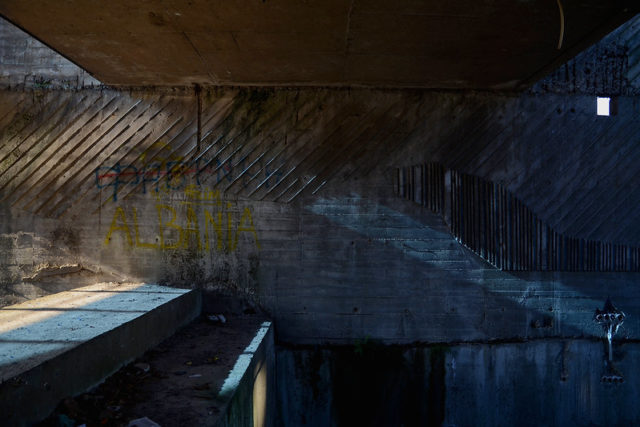
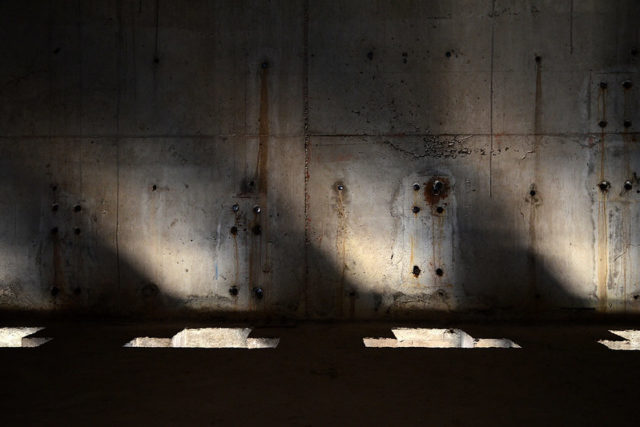
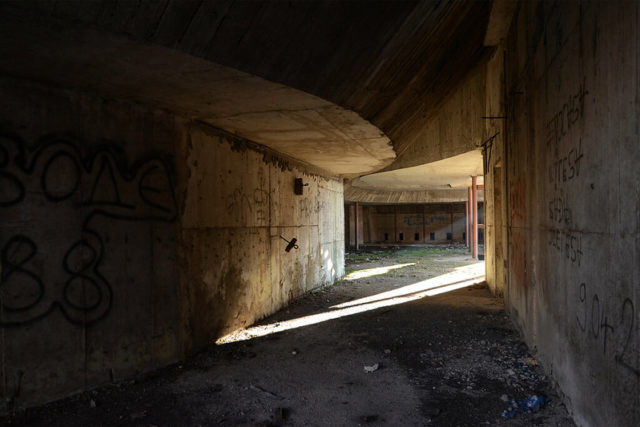
Another Article From Us: Seattle Underground: The remains of the old city that were abandoned and left in ruins until the 1950s
